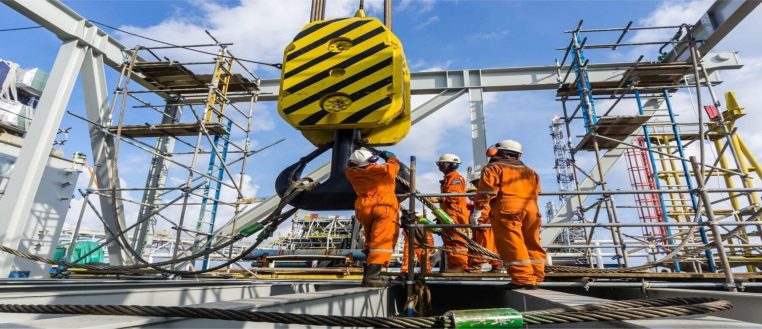Construction sites are dynamic places where many risks can occur and endanger workers and onlookers. Thus, it is crucial to maintain safety throughout construction projects to avoid mishaps, injuries, and fatalities. Construction businesses may improve productivity and project efficiency while providing a safe work environment for their employees by implementing appropriate safety measures. So, we will learn about the top 15 construction safety tips in this comprehensive article.
Introduction
No matter the size or complexity of the project, construction safety is an essential component. It entails spotting possible risks, putting preventative measures in place, and encouraging a safety-conscious mindset among employees. Ignoring safety precautions can have dire repercussions, from accidents and deaths to legal troubles and project delays.
Understanding Construction Hazards
It’s important to comprehend the common hazards found on construction sites before diving into safety guidelines. These include exposure to hazardous materials like asbestos and lead, falls from heights, electrocutions, scaffold collapses, struck-by mishaps, and getting entangled in or between hazards. Workers and supervisors can proactively reduce these dangers by being aware of them.
Top Construction Safety Tips
1). Proper Training and Education
Ensuring every employee has sufficient training and instruction on safety procedures and regulations is essential. This covers instruction on handling dangerous items, responding to emergencies, and operating machines safely.
2). Personal Protective Equipment (PPE)
The risk of injuries on construction sites can be greatly decreased by providing and enforcing suitable PPE, such as hard hats, safety goggles, gloves, and steel-toed boots.
3). Regular Equipment Inspections
It is imperative to conduct routine inspections of tools, machinery, and equipment to detect any flaws or malfunctions that may jeopardize safety. When necessary, replacements or repairs should be completed quickly.
4). Clear Communication
A safe workplace depends on effective communication between supervisors, employees, and other stakeholders. It is important to provide clear instructions, warnings, and safety briefings to avoid misunderstandings and guarantee that all parties know potential hazards.
5). Emergency Preparedness
It’s essential to have emergency measures in place, such as evacuation routes, first aid kits, and emergency services accessible, to react quickly to accidents or unanticipated events. Rain safety construction tips must always be available in a country like Pakistan.
6). Proper Scaffolding and Ladder Use
Correct use of ladders and scaffolds helps stop falls and other mishaps. Employees should receive training on securely assembling, checking, and operating these structures.
7). Electrical Safety Precautions
Construction sites are sometimes associated with electrical dangers. Employees should get training on spotting and staying clear of possible electrical hazards such as overloaded circuits and exposed cables. So, construction electrical safety tips are equally significant.
8). Fall Protection Measures
Fall prevention from elevated surfaces and structures can be avoided by putting fall protection devices, such as guardrails, safety nets, and personal fall arrest systems. The road construction safety tips for drivers also fall under this category.
9). Hazardous Material Handling
Hazardous material handling, storage, and disposal must be done correctly to avoid contaminating the environment or endangering workers’ health.
10). Heat Stress Prevention
Workplace heat exposure increases the risk of heat-related diseases. Workers’ heat stress can be reduced by offering water stations, frequent breaks, and covered locations.
11). Noise Control
Noise pollution from machinery and equipment can lead to several health issues, including hearing impairment. This danger can be reduced by noise control measures, such as using quieter equipment and ear protection.
12). Fire Safety Protocols
To reduce the likelihood of fire-related incidents, it is essential to have smoke detectors, fire extinguishers, and evacuation routes installed.
13). Safe Lifting Techniques
The risk of musculoskeletal injuries from lifting big objects can be decreased by offering mechanical lifting assistance and educating personnel on safe lifting procedures.
14). Housekeeping and Site Cleanliness
Keeping a work area neat and orderly helps lower the risk of fire and other dangers from clutter and debris and prevents trips, falls, and slips.
15). Mental Health Awareness
Safety and general well-being can be enhanced by acknowledging the significance of mental health in the construction sector and offering assistance and resources to employees who are stressed, anxious, or depressed.
Why Construction Safety Tips Are Important
Safety tips on construction site are crucial for several reasons:
1). Preventing Accidents and Injuries
Putting construction safety advice into practice can prevent accidents and injuries on building sites. Through proactive risk mitigation strategies and identifying possible dangers, workers can avert occurrences like electrocutions, falls, and equipment-related mishaps.
2). Protecting Worker Health and Well-being
Ensuring construction worker health and well-being is a top priority. Implementing safety protocols, such as providing personal protective equipment (PPE), encouraging appropriate lifting techniques, and managing heat stress and noise exposure, can enhance workplace safety and mitigate the risk of occupational illnesses and accidents.
3). Minimizing Project Delays and Costs
Project delays and higher expenses may arise from accidents and injuries. Businesses may reduce the likelihood of accidents causing delays, stay out of trouble with the law by following construction safety advice, and keep project budgets and schedules on track.
4). Enhancing Productivity and Efficiency
A safe working environment enhances efficiency and production on building sites. Employees can concentrate on their work without interruption or fear of injury when they feel comfortable and secure in their surroundings. This boosts morale, produces better work, and increases the success of the project as a whole.
5). Ensuring Compliance with Regulations
Companies can adhere to industry standards and regulatory obligations by using construction safety advice. Companies show their commitment to safety and lower their risk of fines and legal ramifications for non-compliance by enacting best practices and adhering to established safety regulations.
6). Promoting a Positive Reputation
Encouraging construction safety not only safeguards projects and workers but also improves a business’s standing among stakeholders, clients, and the general public. A solid safety record shows professionalism, dependability, and a dedication to quality work, boosting confidence in the business’s services.
Conclusion
To sum up, putting construction safety first is crucial to safeguarding employee health and reducing the possibility of mishaps and injuries on building sites. Construction companies may establish safer work conditions and guarantee the successful completion of projects by putting the best safety advice mentioned above into practice and cultivating a safety culture.
Frequently Asked Questions (FAQs)
What are 10 safety rules?
- Wear Personal Protective Equipment (PPE)
- Follow Proper Lifting Techniques
- Use Equipment Safely
- Keep Work Areas Clean and Organized
- Avoid Working Alone
- Stay Alert and Focused
- Communicate Effectively
- Follow Safety Procedures
- Stay Hydrated and Take Breaks
- Attend Safety Training
What is construction safety?
Construction safety involves implementing measures and protocols to prevent construction site accidents, injuries, and fatalities. It includes identifying and mitigating potential hazards, training workers, enforcing safety policies, and promoting a safety culture.
How do you stay safe on a construction site?
- Attend Safety Training
- Wear Personal Protective Equipment (PPE)
- Follow Safety Procedures
- Communicate Effectively
- Stay Alert and Focused
- Use Equipment Safely
- Inspect Work Areas
- Take Breaks and Stay Hydrated
- Avoid Working Alone
- Be Prepared for Emergencies
Why is construction safety important?
Construction safety is important because it helps prevent accidents, injuries, and fatalities, protects workers’ health and well-being, reduces project delays and costs, and enhances productivity and efficiency.
What are some common hazards on construction sites?
Common hazards on construction sites include falls from heights, electrocution, scaffold collapses, struck-by accidents, caught-in or between hazards, and exposure to hazardous materials.
How can workers stay safe when working at heights?
Workers can stay safe at heights using appropriate fall protection equipment, such as harnesses and lanyards. Additionally, they should ensure scaffolds and ladders are set up correctly and securely. Moreover, following proper safety protocols and procedures is essential to minimize risks and ensure a safe working environment.
What are 5 safety precautions when working with construction materials?
- Handle Materials Carefully
- Use Personal Protective Equipment (PPE)
- Store Materials Properly
- Inspect Materials for Defects
- Follow Material Safety Data Sheets (MSDS)








